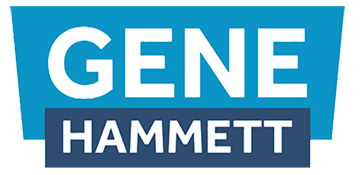In this episode, I sit down with Steven Sashen, co-founder and CEO of Xero Shoes, to explore the transformative concept of Open-book Leadership and how transparent financial practices foster trust and ownership. Under Steven’s guidance, Xero Shoes has embraced Open-book Leadership, sharing financials and key metrics with every team member to drive accountability and alignment. As a result of this radical transparency, the company has soared to No. 2,817 on the 2024 Inc. 5000 list. We dive into real strategies for implementing Open-book Leadership in your organization and how it can strengthen culture, retention, and performance. Tune in to discover how Open-book Leadership can turn your team into informed decision-makers who feel invested in the company’s success.
Leading with Transparency: Steven Sashen on Open Book Leadership at Zero Shoes
The interview features Steven Sashen, the founder and CEO of Zero Shoes, discussed in-depth the concept of open book leadership and how it shapes the culture and success of his company. He begins by emphasizing the importance of every team member’s role and how it directly ties into the company’s success. Sashen’s philosophy of leadership stems from his belief that transparency and open communication are vital for a thriving workplace. Sashen explains that open book leadership extends beyond mere financial transparency; it is about creating an environment where all employees feel significant and included in the company’s journey. At Zero Shoes, this ethos is put into practice through quarterly meetings where the entire staff is shown simplified financial statements, including budgets and profit and loss reports. Sashen highlights the importance of sharing these numbers not just for financial literacy but to empower employees to actively contribute to problem-solving. For example, he recounts a story where a warehouse employee identified a cost-saving error in shipping practices simply because employees understood the implications of the numbers being presented.
Equity in Action: How Zero Shoes Shares Success Through Profit-Sharing and Incentives
Another key aspect of open book leadership that Sashen details is their profit-sharing and long-term incentive structures. He advocates for a profit-sharing plan where, at the end of each profitable quarter, a portion of the profit is distributed evenly among all employees, fostering a sense of ownership and community. Unlike traditional models, which typically reward only high-level executives, this approach ensures that everyone shares in the company’s success, motivating all team members to contribute to its growth. Interestingly, in quarters where the company does not make a profit, Sashen is committed to finding some way to reward employees who have worked hard, thus reinforcing his commitment to valuing every contribution.
Building Trust Through Transparency: Fostering Ownership and Collaboration at Zero Shoes
Sashen also touches on the broader implications of transparency within the organization. He shares that when employees are informed about corporate challenges, like rising tariffs or economic downturns, they are more likely to support and collaborate with leadership rather than panic or search for jobs elsewhere. This openness creates a culture where everyone is facing the same challenges together, fostering trust and a sense of belonging. Throughout the conversation, both Sashen and host Gene Hammett highlight that the culture of ownership extends beyond just financial aspects. Sashen describes how employees have the opportunity to engage creatively in product development, suggesting names and contributing ideas. This level of involvement cements a culture where the whole team feels collaboratively responsible for the products created and the company’s overall success.
Compassionate Leadership: Balancing Transparency, Purpose, and Team Well-Being at Zero Shoes
The discussion also touches on Sashen’s personal experience with health issues, which he navigated privately to prevent unnecessary worry among employees. This anecdote serves as a reminder of the fine line leaders often walk between transparency and protecting their team’s well-being. Ultimately, Sashen emphasizes that aligning the company’s mission with the genuine desire to improve customers’ lives—rather than simply maximizing profits—cultivates a passionate workforce and a committed customer base. In conclusion, Steven Sashen’s insights into open book leadership exemplify a progressive and compassionate approach to company culture that prioritizes transparency, collaborative ownership, and employee empowerment. His experiences and strategies validate the belief that a business can indeed thrive when it operates as a family, fostering an environment where everyone feels valued and invested in the company’s journey toward success.



